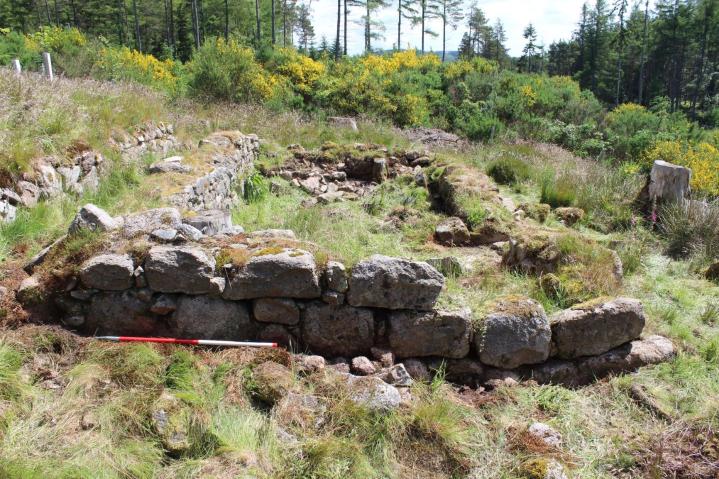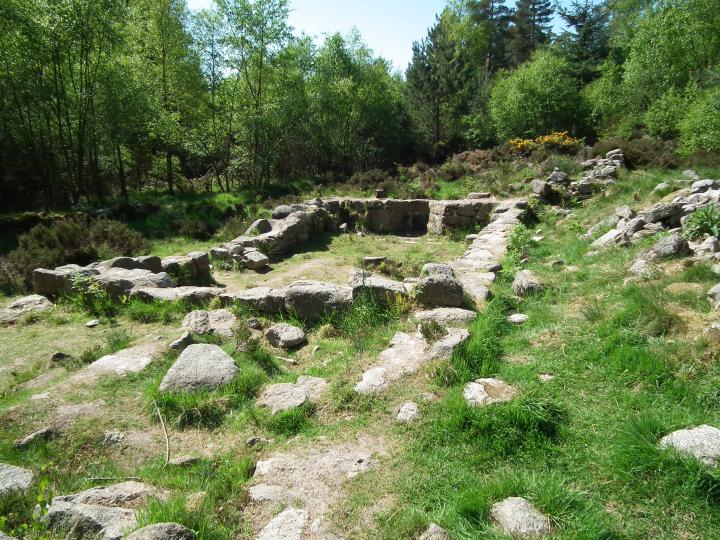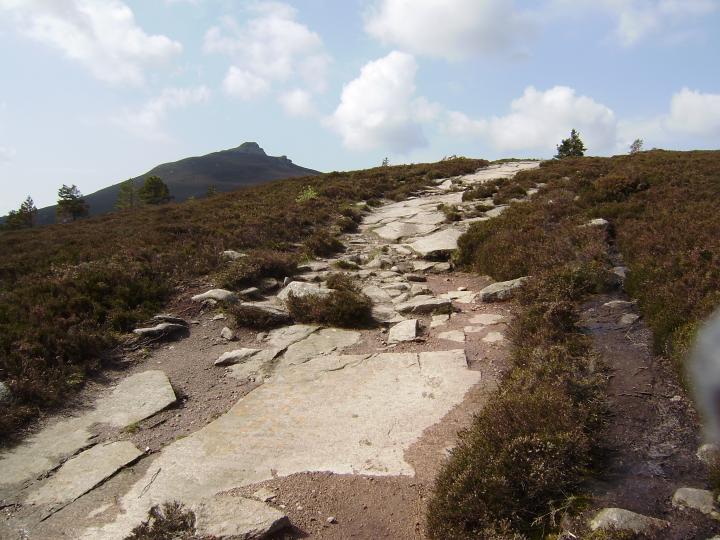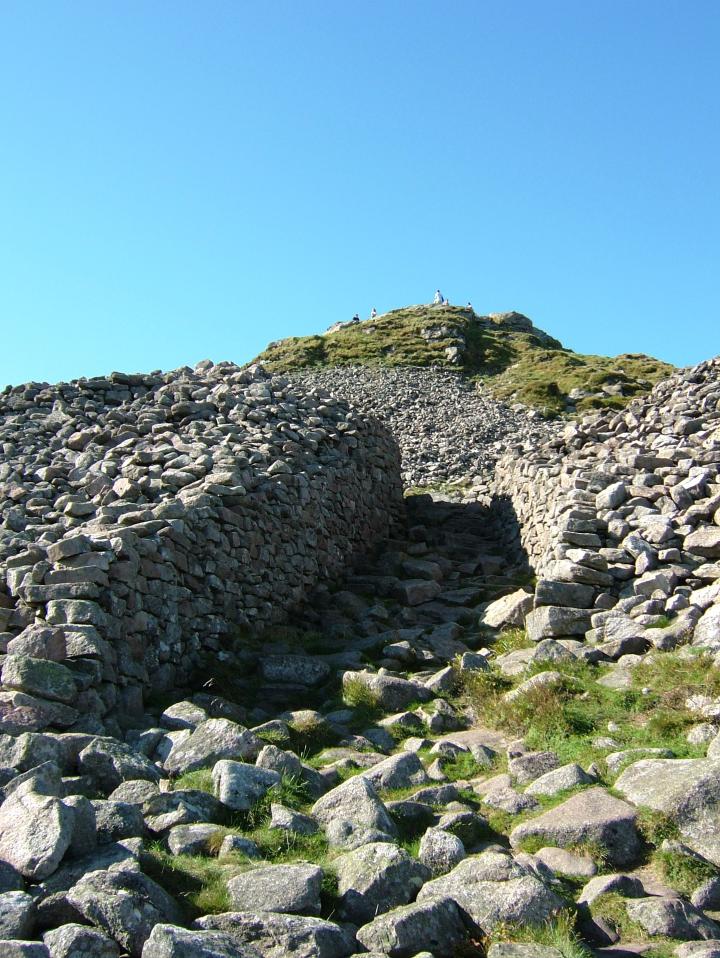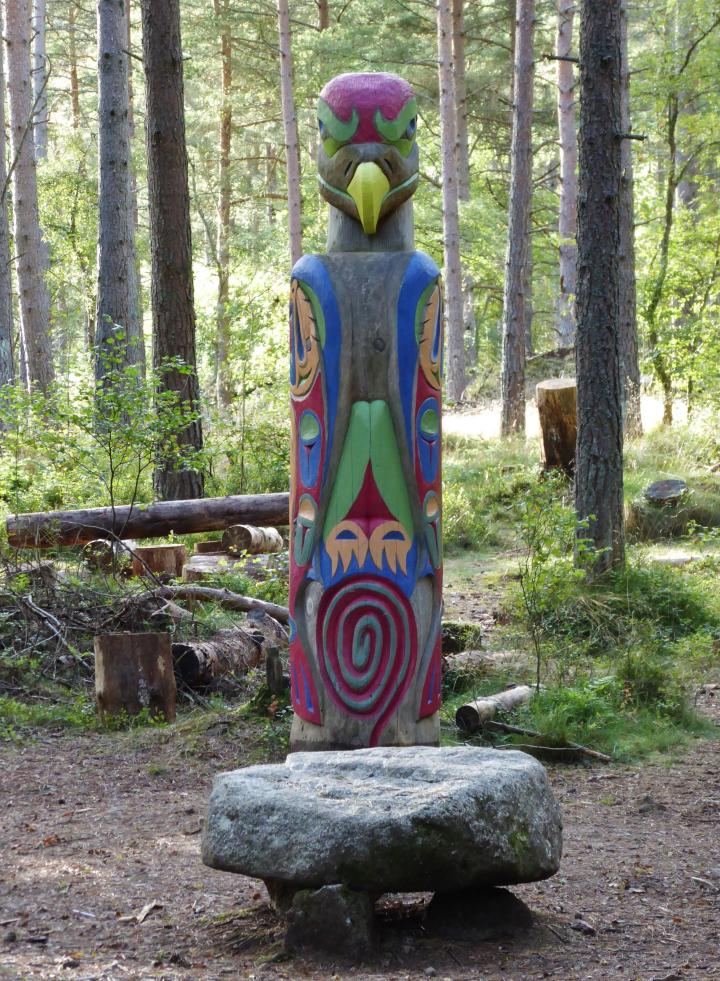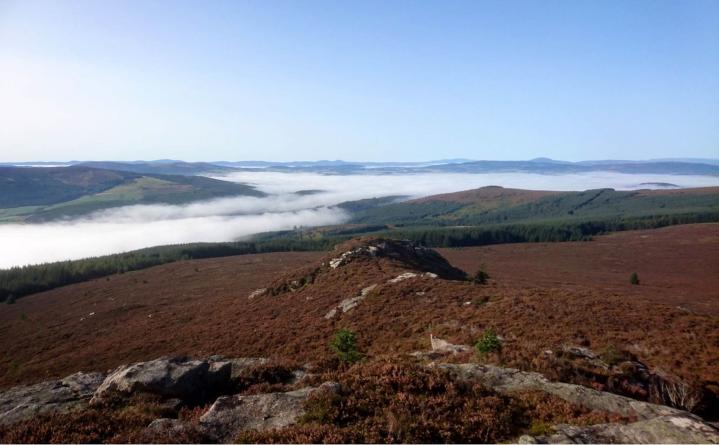Air Crash Memorial Cairn. There have been two air crashes on Bennachie - in 1939 and in 1952.
On 3 September 1939 a Westland Wallace biplane, piloted by Pilot Officer Ellard Cummings with Leading Aircraftman Ronald Stewart as gunner, crashed on the South-East side of Bruntwood Tap.
The plane was a Wallace Mk II target tugplane, serial number K6028, on charge to No. 9 Air Observer School (AOS) at RAF Penhros, North Wales, formed to train observers in navigation, bomb aiming, photography and gunnery. It was on a ferry flight from 1 AOS at RAF Wigtown, which had just been disbanded, to 9 AOS. It was flying from Wigtown to RAF Evanton, Easter Ross. It was on the Dyce- Evanton leg, on the correct route but flying too low to clear the hill which was shrouded in mist. Ellard and Ronald died in the crash. They are officially recognised as the first military casualties of World War II. Wreckage of the Wallace is still there but must be left as a memorial to these brave young men.
The cause of the crash was attributed to the poor visibility prevailing at the time. Time of deaths was given as 3pm but his niece, Helen, has Ronald’s watch which stopped at 3.10pm.
Ellard Alexander Cummings, Service No. 40803, the son of James Victor Cummings and Edith Fanny Ellard, was born in Ottawa, Ontario, Canada, on 14 February, 1916 He was the oldest of a family of six, his brothers being James, Donald, Kenneth and John and sister Myrle. His brother Kenneth, Royal Canadian Air Force, died when he was shot down over Leipzig, Germany, in 1944. Brothers Donald and Clayton served in WW II in Canada.He had a wonderful childhood growing up in Ottawa and spending his summers at the Cummings cottage on the Ottawa River. He was a handsome and charming lad, always smiling and all the ladies loved him. He loved music, playing the banjo, mandolin, trombone and piano, winning musical awards along the way. Other passions were sports, his motorcycle and the family car. He liked to drive as fast as possible! Perhaps that is why he made the decision to become a pilot. He was chosen by the British Government for flight training in the RAF. What the qualifications were, what process Ellard would have had to follow is unknown. In 1938 he signed up for the RAF. Along with a small number of other selected Canadians he sailed on the Cunard White Star Andania arriving in Britain in April 1938. He trained at Sywell, Northampton. At the time of his death he was posted to No 1 AOS at Northcoates in East Lincolnshire.He was 23 when he died and is buried in a Commonwealth War Grave (grave 1949) in the Grove Cemetery, Aberdeen.
His brother John was 6 years old when Ellard died but still remembers a piano piece he taught him. John was involved in the unveiling of the memorial cairn on 2nd September 2012.
Alexander Ronald Renfrew Stewart, Service No. 521250, the son of Alan and Elizabeth Stewart, was born in Paisley in 1915. He had two brothers and two sisters.
His brother John and his Dad visited the site of the crash shortly after it happened. John took a bit of the wooden propeller and from it carved two tiny replicas of the Wallace, one for each family. These are still treasured possessions. John’s daughter Helen came for the unveiling and with her husband Bill Riddick . We hope to add to our knowledge of Ronald. Apparently he was due to marry three weeks after the crash.
He was 24 when he died and is buried in a Commonwealth War Grave ( Sec. S. grave 391 ) in Hawkhead Cemetery, Paisley.
On 12th February 1952 a Gloster Meteor single-seat turbo-jet powered fighter crashed west of Oxen Craig with the loss of its pilot, Pilot Officer Brian Lightfoot.
The plane was a Meteor F Mark 8, Serial No. WA882 of No. 222 Squadron, RAF Leuchars. It took off from Leuchars at 9.58am to carry out a low flying and cross-country exercise. The country was covered in snow and there were frequent snow showers. The late Mrs Lottie Marr of the Mill of Tilliefoure saw and heard the plane. At 10.20am she saw on the hill a cloud of black smoke, heard a thud and then a much louder bang. It had exploded on impact scattering wreckage over a large area.
A team of seven airmen from no.44 Maintenance Unit, RAF Edzell, arrived two weeks later to bury the wreckage and spent nine days in cold and wintry conditions on the task. They didn’t find all of it and as in the case of the Wallace it must be left as a memorial to a brave and talented young man. Near the crash site there is a roughly constructed stone cairn with bits of wreckage which must have been erected by the RAF lads as a tribute to the pilot. It is this cairn which has been rebuilt to house the pink granite plaque bearing the name of the three who lost their lives.
The official cause of Brian’s crash was put down to “poor definition of snow covered mountains in the prevailing conditions”.
John Brian Lightfoot was the son of Thomas Monty Lightfoot and Juanita Blakey of Northallerton, Yorkshire, was born on 8th December, 1929. Known as Brian, he was educated locally then went as a boarder to Barnard Castle School from 1942 -1948. In his final year he captained the school swimming team and was Company Sergeant Major for the combined Cadet Force. He won the cross country race called the Barnard Run in 1943 and 1947. He was an officer cadet at Cranwell and was granted a permanent commission on passing out. His father had an ironmongers business, was Chairman of the Northallerton Chamber of Trade and served in the RAF throughout WW II. Brian had no brothers or sisters. His cousin Julie Blakey was involved in the unveiling ceremony at the cairn.
At the time of Brian’s death RAF doctors were researching “the stresses and strains of flying in modern aircraft at speeds approaching the speed of sound “ and learning to fly the Meteor to gain first hand experience of the conditions which pilots encounter. Maybe it was the lack of such knowledge that contributed to the crash. In the year Brian died a Meteor was written off every two days and a Meteor pilot was killed every four days.
He was 22 when he died and was buried in a Commonwealth War Grave on 16 February at Leuchars Cemetery with full military honours.
We would ask that people do not remove or disturb any remaining wreckage on the hill but leave it as a memorial to these brave young men.
A memorial plaque, commissioned by the Bailies of Bennachie has been built into a cairn on the south side of Oxen Craig to commemorate them.
Map Reference: NJ 662 223 Coordinates: (57.290054,-2.5623979)
Points of Interest









